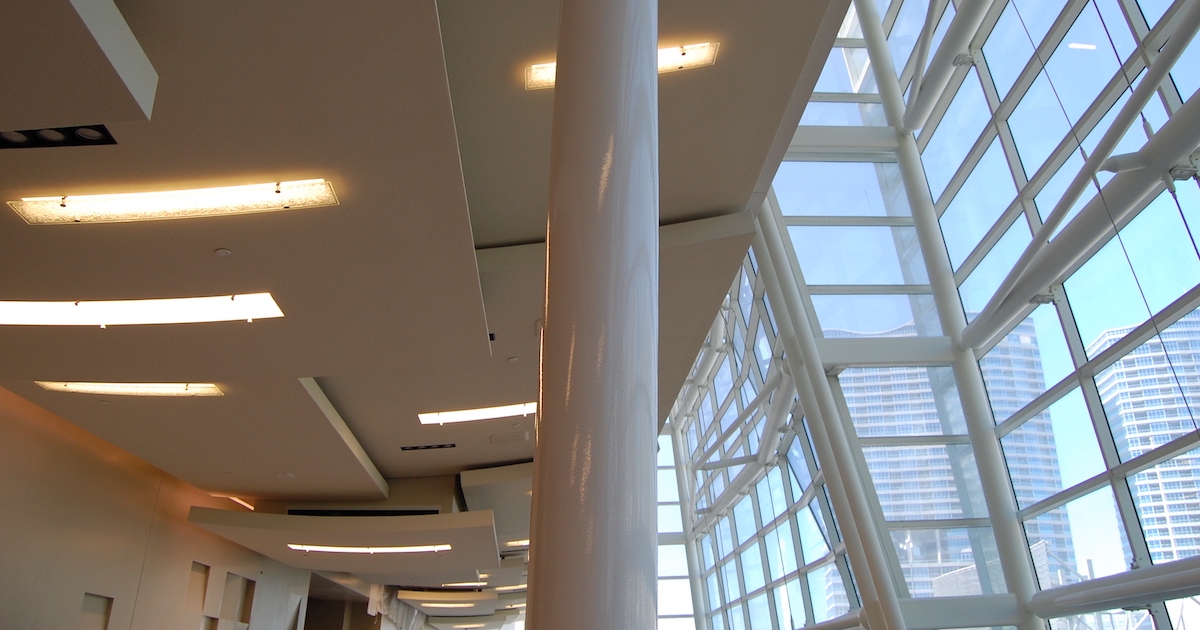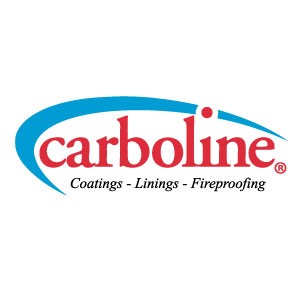
In part two of this article series, we explored a basic understanding of spray-applied fire resistive materials—or, more specifically, cementitious fireproofing.
As we dive into the final installment of our series, you will learn all the basics of intumescent fire resistive materials—from best practices for design and application to common standards that are used for the inspection of these intumescent paints.
What are intumescent paints?
Intumescent paints are frequently specified when aesthetics matter. These lightweight coatings are applied using a spray method that resembles that of traditional paint—typically in multiple, thick layers to achieve the desired thickness.
When subjected to the heat of a fire, the intumescent coating undergoes a swift transformation through a process known as sublimation. This is when complex chemical reactions cause the coating to swell up to 100 times its initial thickness, creating an insulating, carbonaceous char layer.
This char performs the same function as a more inert spray-applied fire resistive material (SFRM). In fact, you may already be familiar with another application of intumescent materials called "Black Snake" fireworks, which expand after they are lit.
Oftentimes, IFRMs are applied to similar members as the SFRMs we previously discussed. However, the higher cost and complexity of application seen with IFRMs can limit them to areas where their smoother, paint-like appearance is desired.
Intumescent paints can be water-based, solvent-based, or even consist of multiple-component materials like epoxies. A water-based material might be selected for a smoother finish, while a solvent-based material would be better suited for speed of application or weather resistance during application. Epoxies can be used for steel on the exterior of a building where the fireproofing must be able to handle the weather in service.
Design considerations for intumescent coatings
The designs and specifications for intumescent paints are largely similar to those used for SFRMs. However, density is typically not required with intumescents, and required thicknesses are usually lower as well. The total thicknesses range from 30 mils (>1 mm) to several hundred mils.
Intumescent coating manufacturers can supply the necessary designs to calculate the required thickness from piece to piece. These should come from third-party testing and certification organizations like UL or Intertek.
Like cementitious fireproofing, these designs will be for a particular orientation and shape of steel. Common types include wide-flange or hollow columns, floor beams, or floor assemblies. With intumescent paints, using multiple products on a single project may be advantageous to optimize material usage and cost.
Best practices for the application process
Intumescent coatings bring additional complexity to the application compared to SFRMs. They often require an approved primer material that must be applied to properly prepared steel—both at the thickness recommended by the manufacturer and in the proper environmental conditions. Only once the coating is sufficiently cured can the IFRM be installed.
To further complicate the application process, there may be maximum per-coat thicknesses and minimum cure times that need to be adhered to between coats. This could mean several coats of the intumescent fireproofing applied over a period of a week or more.
After the steel is prepared, the primer is applied, and the correct total thickness of the intumescent paint is installed, a topcoat may also be needed. The right choice will depend on aesthetics and the service environment.
With the right primer and topcoat, some intumescent coating systems can be used on exterior steel that is permanently exposed to the environment. Epoxy intumescent paints can sometimes be applied off-site before the steel is shipped and erected or onsite in a tent or temporary application area before erection.
Connection points and blockouts would then be coated once the steel is installed. This process can minimize scheduling concerns and reduce interference from other trades.
Industry standards for inspection
Inspection of intumescent fireproofing is also very similar to SFRMs, as dry film thicknesses are compared to the design ratings in an organized manner. Common industry standards for inspection include AWCI 12-B and SSPC-PA 2.
Like with spray-applied fire resistive materials, these standards generally require average thickness to meet the design minimum, with allowances for low and high measurements. The owner and applicator should agree upon the inspection standards, as well as the pass/fail criteria, before the job commences.
It is also good practice for the applicator to produce a representative sample of the system to be approved by the architect or engineer. This reduces the risk of disputes over the final texture and appearance. Although IFRMs can be applied similarly to ordinary architectural paint, keep in mind that the texture will typically not be as smooth.
The vast world of passive fire protection is certainly complex—from how it all works and the different types of fireproofing to common industry standards and best practices. That said, it all boils down to having the right fireproofing system for your structure.

